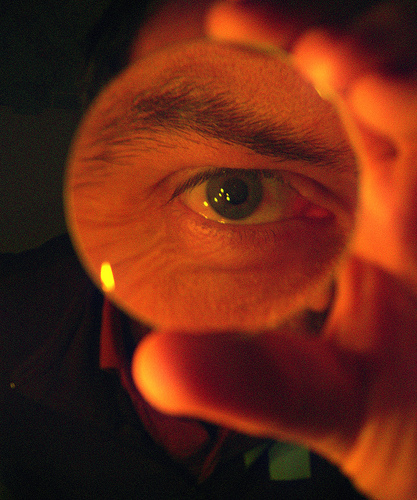Coordinate Transforming Metamaterials

In this project we propose a new formulation of the transformational approach to acoustic meta-materials based on the idea of analogue gravity. The aim is to obtain a more natural extension to acoustic of the powerful transformational techniques devised for optics.
Introduction
It is known for a long time that "empty space can look like a medium." Indeed, if we look at electrodynamics formulated on a generic (not necessarily flat) space-time and written in terms of generic (not necessarily orthonormal) coordinates, then the constitutive relations in this particular situation, i.e. the relations that define the macroscopic fields in terms of the microscopic ones, resemble those of a rather special medium.
While this fact has been considered just as a funny exercise for students in the past, recently it has been shown to be extremely powerful, if the logic is reverted [1, 2, 3]. If empty space can look as a medium then also a medium can look as an empty space. But this yields an extremely powerful tool to design new types of artificial materials: first one determines the space the material should mimic, then one writes down a transformation from the concrete (laboratory) space to the hypothetical (electromagnetic space) and as a result the necessary constitutive relation and the solution of Maxwell's equations in the new medium follow almost trivially. Though this allowed a simple formulation of meta-materials such as invisibility cloaks [1, 2], perfect lenses [3] (originally discussed in [4, 5]) and others (see e.g. the list of applications in [6]), the types of media accessible in this way are nevertheless rather restricted.
Within the ACT extensions of the coordinate transformation approach have been investigated. Our analysis started from the observation that the transformation from laboratory space to electromagnetic space constitutes a symmetry (a diffeomorphism), physics in the two spaces are indistinguishable. But when designing new artificial materials this condition appears arbitrary and could be relaxed. This is possible, but instead of a single electromagnetic space several hypothetical spaces have to be introduced. Different fields (electric field, magnetic field etc.) or even different components of one field (electric field in x-direction vs. electric field in y-direction) then are transformed to different spaces, in other words they behave "as if they belonged to different transformed spaces". In its most general form this concept yields materials with exotic characteristics such as magnetic monopoles. But it is possible to identify a class of transformations which avoids such problems and can be handled in a similar way to the original proposal [1, 2, 3]. Still, these transformations allow a geometric interpretation of many media that are not covered by the original proposal.
References
- J.B. Pendry, D. Schurig and D. Smith, "Controlling electromagnetic fields," Science 312 (2006) 1780.
- U. Leonhardt, "Optical conformal mapping," Science 312 (2006) 1777.
- U. Leonhardt, "General relativity in electrical engineering," New Journal of Physics 8 (2006) 247.
- V. Vesalgo, "Electrodynamics of substances with simultaneously negative values of sigma and mu," Sov. Phys. Usp. 10 (1986) 509.
- J.B. Pendry, "Negative refraction makes a perfect lens," Phys. Rev. Lett. 85 (2000) 3966.
- D. Schurig, J.B. Pendry and D. Smith, "Transformation-designed optical elements," Opt. Express 15 (2007) 14772.